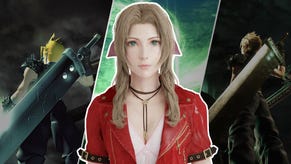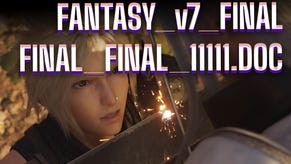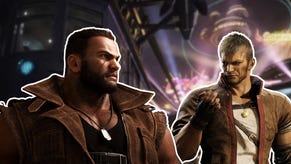Final Fantasy 7 Rebirth is bigger, bolder, and better than the excellent FF7 Remake – hands-on
Final Fantasy 7 Rebirth doesn’t want to reinvent the wheel, but is content to iterate. A good job, then, that it’s iterating on the best FF since the PS2 era.
When fans first heard that Final Fantasy 7 Remake was to be the first entry in a multi-part saga, some were disappointed. But the truth is, breaking the story of FF7 into multiple ‘remade’ titles may well be one of the best decisions Square Enix has ever made.
I mean, sure. It’s good for the bottom line, make no mistake. Why charge once when you can charge thrice? But that’s the cynical point of view – and if you’ve reached the end of 2020’s FF7 Remake, you’ll know that there’s more to this than simply a remake of a 90s classic. That gives more than enough story latitude for the company to concoct something irresistible – and in a first hands-on, Final Fantasy 7 Rebirth is a tantalizing hint of what is to come.
In this demo (which this week will be playable to the public at Tokyo Game Show), players get to choose between two different scenarios. One is a flashback scene that clearly will be placed early in the game, showing a young Cloud and Sephiroth allied as they ascend the perilous Mount Nibel in order to investigate a damaged Mako Reactor. The other is from probably a few hours later, and most likely represents the first of FF7 Rebirth’s major ‘open’ areas, giving the party a fairly expansive zone on the outskirts of the gun-toting city of Junon to explore.
.png?width=690&quality=70&format=jpg&auto=webp)
The choice of these two segments speaks to FF7 Rebirth’s probable structure, which most likely will match the first game. That is to say, it’ll feature linear roller-coaster like action stages that take you on an exhilarating journey with all of the design hallmarks of a Call of Duty campaign mission, just with swords and magic. These will be offset by lightly open-ended areas that aren’t quite open world, but more like open ‘zone’; modest-to-large areas where you’re given the choice of meandering around to undertake side activities or simply heading right to the next story objective.
The Nibelheim flashback appears to be the first type of chapter, and shares much in common with FF7 Remake’s explosive opening Mako Reactor adventure. Blue glyphs litter the environment to tell you that yes, you can scale this particular rock, and the game regularly invites you off the beaten path to an inevitable dead end where there’ll be a chest or some other vaguely useless trinket to pick up. Cutscenes punctuate transitions from one part of the stage to the next, and eventually it’s topped off with a boss encounter where our lead and his companion offer chatty banter as they battle a hulking foe that is practically designed to teach you combat basics and test your ability to control two characters and exploit weaknesses. It’s very similar.
The open-ended area is where FF7 Rebirth flexes its new-generation muscles, however. The area surrounding Junon is huge, and essentially represents a piece of the FF7 world that has never ‘properly’ appeared in a game before. This was an area of the ‘world map’ in the original game, where you’d plod your blocky boots across it in order to reach the next beautiful pre-rendered locale. It was basic. Here, it’s a fully-realized world – a dusty, arid zone with occasional pockets of green to break it up and a coastline littered by rusting shipwrecks.
.png?width=690&quality=70&format=jpg&auto=webp)
From the position at which this part of the hands-on begins, with the Mythril Mines behind you, the next story objective is around 620 meters away. For the record, if you wanted to bee-line this, it’d take you a couple of minutes on a Chocobo, and a little longer on foot. To do that basically takes you around the outskirts of the area – but you can wander deeper, into a zone that feels more like a smaller and self-enclosed version of, say, Final Fantasy 15’s ‘Duscae’ than any of the areas of FF16, which largely feel fairly claustrophobic and uninhabited by comparison.
The difference, I suppose, is in the open-ended nature of the design. There was annoyingly no on-screen mini-map in this open zone (curiously, the linear level has one), but if there were one, you’d see a great big blob of explorable area as opposed to smaller splodges connected by corridors, which is how much of FF7 Remake’s open-ended slums zones were designed.
This feels like both an embracing of how the original FF7’s story and worldview opened up upon leaving Midgar and a direct response to the commentary around FF7 Remake’s relatively weak open-ended chapters. There’s stuff to do in these plains, including hunts, a Chocobo Farm to visit that wasn’t in the original game (complete with the ability to kit your birds out with outfits and accessories), Baby Chocobos to assist, and a handful of NPCs to meet.
.png?width=690&quality=70&format=jpg&auto=webp)
The hunts are probably the most interesting piece of side content present in the zone, and are pretty simple. You approach a marker using a compass heading, and you’ll find a ‘fiend’. This appears to be a powerful or differentiated version of an existing enemy, and once you get close enough to initiate the fight, you’ll be presented with a few optional bonuses for the fight. For instance, one pair of targets tasked me with staggering one of them, defeating them within a certain time limit, and preventing them from using a specific move. It seems like there’s a decent amount of challenge to this stuff to encourage attempting these battles at least a couple of times, and in this Junon area the UI flagged four different hunts; I imagine later areas will feature similar setups.
Hunt or not, once you’re in combat, it’s all pretty familiar. FF7 Remake had a wonderful combat system that was for my money the most potent vision of respecting Final Fantasy’s ‘Active Time Battle’ heritage in a modern action game. And if it ain’t broke, they’re not going to fix it. You can expect new moves, new materia, and enhanced or all-new skills. In this build there were new characters: Sephiroth, who likely will only be playable for a hot minute, and Red XIII, who will be a full-time party member. Yuffie will join later, but wasn’t playable in this demo – and we now know Cait Sith will be, too. That brings the core party members to seven, plus Sephiroth, and most likely Zack. Nine ain’t bad; over double FF7 Remake. But the cadence and flow of combat is pretty much identical.
.png?width=690&quality=70&format=jpg&auto=webp)
The biggest combat addition for Rebirth, at least in this demo, isn’t even technically new. Team-up ‘Synergy Abilities’ allow two characters to deliver devastating blows as a duo every so often, with the frequency based on using other battle skills first. But team-up attacks were present in Episode Intermission, the PS5-only DLC story for FF7 Remake.
The promise, then, is to flesh the game out in other areas. Hints of that are ubiquitous in this demo. There’s a crafting system that allows you to collect materials which litter the overworld, drop as hunt rewards, and can even be sniffed out and dug up by your Chocobo. Crafting is only seemingly used to create basic items like Potions and the like, but a Crafting EXP system suggests the more you craft, the more stuff you’ll be able to create over time.
And then there’s that recent trailer, which aired in a State of Play a few days after I played the game. That trailer showcases the true promise: mini-games galore, a wide variety of environments, more enemies, just… more.
.png?width=690&quality=70&format=jpg&auto=webp)
This is the promise of FF7 Rebirth. It’s pretty rare that Final Fantasy’s developers get a chance to iterate. Usually, they’re throwing everything out from one game to the next. Past occasions where they have iterated, like the FF13 series, haven’t been planned – FF13 got sequels out of budget-balancing necessity, not because of a plan. This has all been planned and prepared for, though. And you can just tell.
The result is a curious amount of content reuse, admittedly. Even battle barks - Aerith still hollers “Here’s one for you!” when she slings a ranged spell, and sing-songs “I’m coming~!” when you switch to direct control of her in combat, for instance. I was quite surprised to hear a fair bit of reused music, too - as you ascend Mt. Nibel, you’ll hear the same reactor dungeon music from the original game. Both bosses used tracks from FF7 Remake, but with some new phase transition stems. All this is theoretically fine, though - because for all that is ‘reused’, there’s a hell of a lot here that’s new.
But make no mistake: this is more of the same. Don’t expect anything radical, at least in terms of how it feels, plays, or even looks - it’s a wider-scoped, smoother-running, moderately better-looking version of what we saw on PS5 in the Intergrade re-release. I expect the left-field twists and turns to largely be saved for the story - and I expect in that area they’ll be plentiful.
.png?width=690&quality=70&format=jpg&auto=webp)
When the game that’s a basis for this one is one of the best games of 2020 – and yes, a better game than Final Fantasy 16 – iterating is no bad thing. FF7 Rebirth was already high up, but an hour with it has made it shoot to the top of my most-anticipated list for 2024. It’s out on February 29, 2024, and is PS5 exclusive for at least three months.
.png?width=690&quality=80&format=jpg&auto=webp)



.jpg?width=291&height=164&fit=crop&quality=80&format=jpg&auto=webp)

.jpg?width=291&height=164&fit=crop&quality=80&format=jpg&auto=webp)










